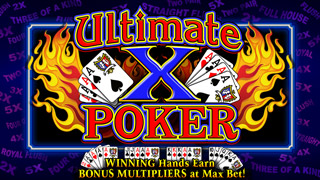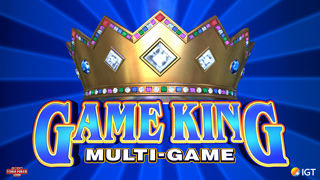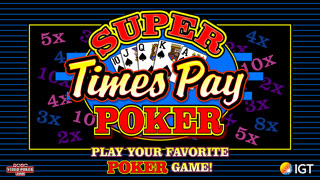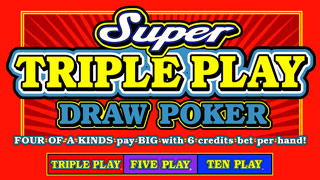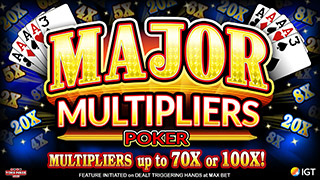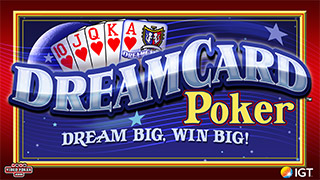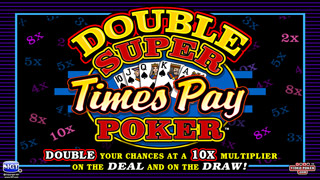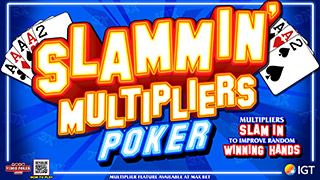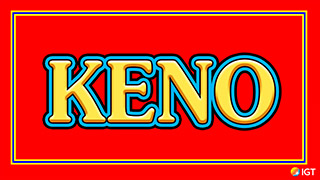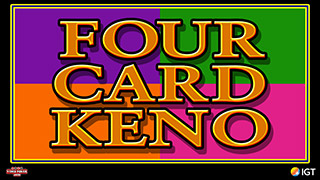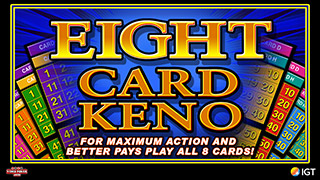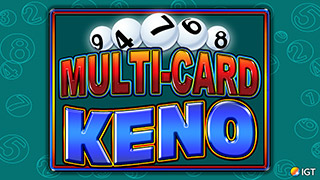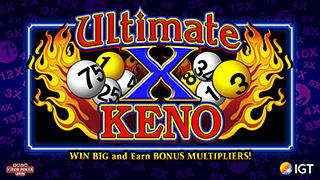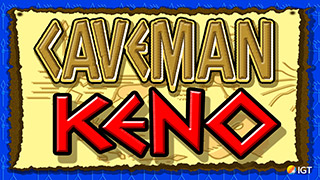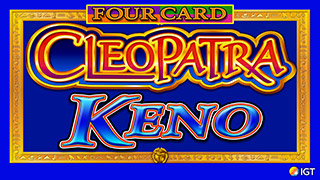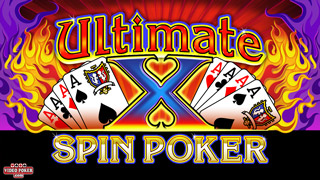Strategy Questions
-
Tony Felder
- Forum Regular
- Posts: 87
- Joined: Mon Dec 12, 2011 1:07 pm
Re: Strategy Questions
Thanks for the corrections VP, like I said, I am fairly new to this and have just started working on the math, so its going to be easy to get things past me.I am interested to see the breakdown on the 2nd questions because most VP players I talk to do not keep the kicker even though the trainers say to.I guess another question would be, do you ALWAYS play the correct math play regardless of instincts?
-
New2vp
- Video Poker Master
- Posts: 1878
- Joined: Mon Sep 11, 2006 4:02 am
The mistakes were not intentional I went off the pay table in OpVP that I have on my home computer and didn't check it against one in a casino. I have never played 10-6 DDB and wouldn't have known the difference. Thanks new2vp.Far as I knew 1600 coins was the correct pay for Aces with a Kicker in DDB.~FK
Sorry, Frank. I was just teasing trying to give you an "out" using the standard professor's dodge when a mistake is made on the blackboard (or the more current whiteboard) when he says he was just testing the students. (I hope that was obvious and not too subtle!) But I was also concerned since Tony, being new to the game, might have been more confused if your numbers didn't tie when he entered the hand in a different vp trainer. I could say I got the pay schedule from Appendix B, p. 268, in your "Secret World" book, where you show several DDB schedules that pay 2000 coins for quad aces + 2, 3, or 4, including the only common pay schedule that has an ER over 100%, but that is really knowledge absorbed by osmosis from playing too many hands on earlier trainers such as WinPoker, Frugal and Wolf VP. (I do think there are some DDB machines in which the payoff for quad aces plus kicker is 1600, but I don't recall running into any on this videopoker.com site. The 1600-coin jackpot is more often associated with 4 aces + J,Q,K in Super Double Double Bonus or the old Double Double Jackpot games.)The reason you gave here is interesting to me and a bit ironic because when I pointed out some pay schedule errors in the OpVP games to Mr. Paymar when he was developing his software this spring, he said the same thing about not having played the games in question. I haven't yet looked closely at the final version of that software, but I will proceed with caution when I do. Thanks for the tip.
-
Frank Kneeland
- VP Veteran
- Posts: 762
- Joined: Wed Feb 02, 2011 6:59 pm
[QUOTE=Frank Kneeland]
The mistakes were not intentional I went off the pay table in OpVP that I have on my home computer and didn't check it against one in a casino. I have never played 10-6 DDB and wouldn't have known the difference. Thanks new2vp.Far as I knew 1600 coins was the correct pay for Aces with a Kicker in DDB.~FK
Sorry, Frank. I was just teasing trying to give you an "out" using the standard professor's dodge when a mistake is made on the blackboard (or the more current whiteboard) when he says he was just testing the students. (I hope that was obvious and not too subtle!) But I was also concerned since Tony, being new to the game, might have been more confused if your numbers didn't tie when he entered the hand in a different vp trainer. I could say I got the pay schedule from Appendix B, p. 268, in your "Secret World" book, where you show several DDB schedules that pay 2000 coins for quad aces + 2, 3, or 4, including the only common pay schedule that has an ER over 100%, but that is really knowledge absorbed by osmosis from playing too many hands on earlier trainers such as WinPoker, Frugal and Wolf VP. (I do think there are some DDB machines in which the payoff for quad aces plus kicker is 1600, but I don't recall running into any on this videopoker.com site. The 1600-coin jackpot is more often associated with 4 aces + J,Q,K in Super Double Double Bonus or the old Double Double Jackpot games.)The reason you gave here is interesting to me and a bit ironic because when I pointed out some pay schedule errors in the OpVP games to Mr. Paymar when he was developing his software this spring, he said the same thing about not having played the games in question. I haven't yet looked closely at the final version of that software, but I will proceed with caution when I do. Thanks for the tip.
[/QUOTE]Ah It all makes perfect sense now. I haven't read my book yet.:)I do remember doing those pay-tables now that you reminded me. I did so many in such a short time it all blurs together. FYI most of my book was written 10 years ago. If you've read it recently you probably know it better than I do.
-
New2vp
- Video Poker Master
- Posts: 1878
- Joined: Mon Sep 11, 2006 4:02 am
I understand. Unfortunately I have a different problem. I remember some things from 20 years ago better than I remember a conversation from last week.
-
Vol
- Forum Rookie
- Posts: 48
- Joined: Tue Jan 13, 2009 11:39 pm
Tony, Frank, new2vp, et al.,
Here is a slightly different approach to the solution of the AAA66 problem (AAA66 and AAA - 4OAK parts only). I think that it is more statistically oriented and less intuitive than Frank's solution. Thus it might be easier to extend to more difficult problems. Also, it would be straightforward to analyze the effects of changing the pay table. Does anyone find this useful ? Tony, do you? Should I continue to work these problems using this format?
Happy Holidays to All,
Vol
-------------
Analyze AAA66 for DDB with Pays 10,6,3 for FH, F, 3OAK per coin
Use the following:
Expected Value (EV) = Payout * Probability
Combination of r things from n = n!/(n-r)!*r!
Assume 5 coins played
1. Keep All Five Cards or Discard the Pair?
a. Keep all 5 cards (FH)
Payout = 50, Prob = 1
EV = 50 * 1 = 50
b. Keep AAA only
Deck contains 47 cards
Draw 2, either may be the A.
Number of different pairs 2 from 47 = 47*46/2
Number of pairs with an A = 46
Probability of drawing an A = 46/(47*46/2) = 2/47
Payout can be either 2000 (with a 2,3,or 4 kicker) or 800 (without a kicker)
There are 12 kickers in the deck, 34 are not
Average Payout = (800*34 + 2000*12)/46 =
1113.0435
EV = Payout (Ave) * Prob = 1113.0435 * (2/47) =
47.36355
The same answer comes from Frank's Analysis as corrected by New2VP
EV = (24000 + 27200)/1081 =
47.36355
---------------
Here is a slightly different approach to the solution of the AAA66 problem (AAA66 and AAA - 4OAK parts only). I think that it is more statistically oriented and less intuitive than Frank's solution. Thus it might be easier to extend to more difficult problems. Also, it would be straightforward to analyze the effects of changing the pay table. Does anyone find this useful ? Tony, do you? Should I continue to work these problems using this format?
Happy Holidays to All,
Vol
-------------
Analyze AAA66 for DDB with Pays 10,6,3 for FH, F, 3OAK per coin
Use the following:
Expected Value (EV) = Payout * Probability
Combination of r things from n = n!/(n-r)!*r!
Assume 5 coins played
1. Keep All Five Cards or Discard the Pair?
a. Keep all 5 cards (FH)
Payout = 50, Prob = 1
EV = 50 * 1 = 50
b. Keep AAA only
Deck contains 47 cards
Draw 2, either may be the A.
Number of different pairs 2 from 47 = 47*46/2
Number of pairs with an A = 46
Probability of drawing an A = 46/(47*46/2) = 2/47
Payout can be either 2000 (with a 2,3,or 4 kicker) or 800 (without a kicker)
There are 12 kickers in the deck, 34 are not
Average Payout = (800*34 + 2000*12)/46 =
1113.0435
EV = Payout (Ave) * Prob = 1113.0435 * (2/47) =
47.36355
The same answer comes from Frank's Analysis as corrected by New2VP
EV = (24000 + 27200)/1081 =
47.36355
---------------
-
New2vp
- Video Poker Master
- Posts: 1878
- Joined: Mon Sep 11, 2006 4:02 am
Tony, Frank, new2vp, et al.,
Should I continue to work these problems using this format? The same answer comes from Frank's Analysis as corrected by New2VP
EV = (24000 + 27200)/1081 =
47.36355
---------------
Hey Vol, happy holidays back at ya. After someone gets comfortable
working it out one way a couple times, the next shortcut is to use a
trainer hand analyzer (in my opinion). And I doubt if many really want
to work out 1 or 2-card holds like J or KQ suited by hand like this.It
is much more difficult to follow someone else's calculations than it is
to work through it yourself. And the first couple times, it helps to
know exactly what number you should be getting, which is why the
trainers are so helpful (or a website like vpgenius, which has a hand
analyzer).But I do think you need to look at your final answer.
You need 63.8945 somewhere, probably after showing how many full houses
and trips can be made by holding AAA. Or maybe I just didn't see what specific difference you were trying to show?
-
Frank Kneeland
- VP Veteran
- Posts: 762
- Joined: Wed Feb 02, 2011 6:59 pm
I'll type up the second draw comparison in a few. Here's something weird to chew on until then.http://www.youtube.com/watch?v=DfPeprQ7 ... r_embedded#!
-
Frank Kneeland
- VP Veteran
- Posts: 762
- Joined: Wed Feb 02, 2011 6:59 pm
I've had no time to post. Started working on one of my product prototypes today. I'll try to finish the draws for 3A + Kicker in the morning.
-
Frank Kneeland
- VP Veteran
- Posts: 762
- Joined: Wed Feb 02, 2011 6:59 pm
The
other main dealt hand that you wanted help with AAAK2. This draw will
have strong similarities to the draw we did to (AAA66) but it's not
quite the same because with are discarding 1 card from two ranks
instead of 2 cards from one rank. Also, since one of the ranks we are
discarding is a bonus kicker this will again slightly change the
frequencies. For the one card draw we can just list the actual cards
that result in pays greater than 3K. Here's a quick breakdown.
(AAA2)
K
4K
with Kicker = A = 1 1*2000 = 2000 coins
FH
catching a Deuce = 3 3* 50 = 150
All
remaining cards (3K) = 43*15 = 645
EV
= (2000+150+645) / 47 = 59.4681 coins
Now
to handle drawing 2 to three Aces discarding a Deuce and a King.
(AAA)
2K
4K:
Once you catch the remaining Ace there are 46 cards left in the deck.
Only 11 of these will be Aces with a Kicker, leaving 35 to give you
normal 4 Aces.
Aces
with a Kicker = 11*2000 = 22,000
4
Aces = 35*800 = 28,000
In
our first example there was only one way to get the bad rank Full
House now there are two bad ranks and each has three cards left in
the deck, rather than two, this means there will be more bad rank FH
to factor in.
3
things taken two at a time computes to:
3*2
/ 1*2 = 3
Since
you have both Kings and Deuces as bad rank this gets multiplied by 2.
Bad
Rank FH = 3*2 = 6
We
started with 13 ranks, one is the Aces we are drawing to, and two of
the ranks were bad and were just calculated. This leaves us with 10
remaining good ranks and we already know there are 6 ways one can
catch a pair from 4 cards.
4*3
/ 1*2 = 6
Good
Rank FH = 10*6 = 60
Total
FH frequency is: 66 EV: 66*50 = 3,300
All
remaining hands will of course be 3K and we can again get that by
subtracting our 4K and FH from 1081.
1081
– 46 – 66 = 969 (3k frequency)
3K
= 969*15 = 14,535
Now
if we sum and divide by the total number of hands we get the EV for
drawing two to (AAA) 2K:
22,000
+ 28,000 + 3,300 + 14,535 = 67835
67835
/ 1081 = 62.7521
(AAA)
2K = 62.7521
(AAA2)
K = 59.4681
Here
drawing to the 3 Aces is slightly better. (Please note this post was rushed before I had to go to work...please check for errors) ~FK
-
backsider
- VP Veteran
- Posts: 578
- Joined: Sun May 08, 2011 11:35 pm
Im interested in seeing an analisis of the tdb game. Theres been a lot of discussion about holding three aces and throwing out the kicker in the deal, but I think I go against the majority by holding that kicker for the possible 4000 credits payoff. I look at as another chance of being dealt four to a royal flush.



